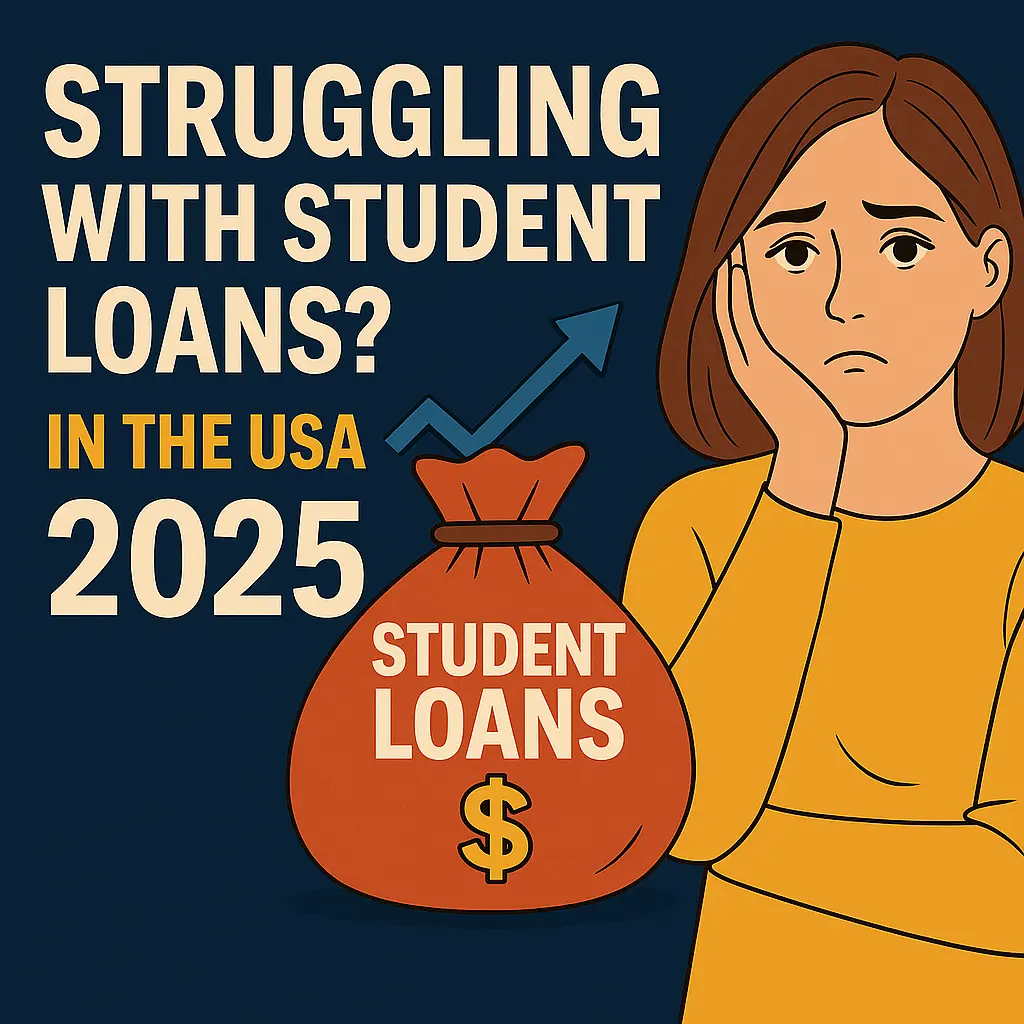Physical Address
South Garohills Megahalay
Physical Address
South Garohills Megahalay
Struggling with student loans in the USA? Learn about repayment options, forgiveness programs, refinancing, and smart borrowing tips in 2025. Discover how to reduce debt stress and build a financially secure future.

Student loans are financial tools that allow students to pursue higher education by borrowing money for tuition, books, and living expenses. In 2025, with college tuition at record highs, student loans remain a crucial lifeline for millions of American students.
However, these loans can also become a long-term financial burden if not managed wisely. As per recent data, student debt is now one of the largest forms of consumer debt in the USA, second only to mortgages.
Total Student Loan Debt (2025): Over $1.78 trillion across 43 million borrowers.
Average Borrower Debt: Around $37,000 per person.
Delinquency Rates: Despite economic recovery, 11% of borrowers are behind on payments.
This massive debt crisis has led to increased demand for forgiveness programs and innovative repayment options.
Pros:
✅ Lower fixed interest rates
✅ Income-driven repayment (IDR) plans
✅ Access to forgiveness programs
Cons:
❌ Limited borrowing amount
❌ Government policy changes can affect repayment terms
Pros:
✅ Higher borrowing limits
✅ Quick approval process
Cons:
❌ No forgiveness programs
❌ Variable (and often higher) interest rates
Federal Loans: Fixed rates between 5.5% – 7% depending on undergraduate or graduate status.
Private Loans: Variable rates ranging 4% – 15% based on credit score.
Repayment Terms: Typically 10 – 30 years.
New 2025 Update: The Department of Education has introduced lower income-driven repayment caps, reducing payments to as low as 5% of discretionary income.
For teachers, nurses, and government employees.
Requires 120 qualifying payments.
Up to $17,500 forgiveness for teachers in low-income schools.
Forgiveness after 20–25 years of consistent IDR payments.
Targeted relief for low-income borrowers and public service workers.
Combines multiple federal loans into one.
Pros: Simplifies payments, eligibility for PSLF.
Cons: Interest rate averaged, not lowered.
Done via private lenders to get a lower rate.
Pros: Potential to save thousands in interest.
Cons: Lose federal protections and forgiveness eligibility.
Apply for Scholarships & Grants First.
Borrow Only What You Need.
Choose Federal Loans Over Private.
Start Paying Interest Early (if possible).
Track Expenses & Budget Wisely.
On Credit Score: Timely payments can boost your credit, while late payments severely damage it.
On Financial Freedom: High debt delays home buying, retirement savings, and major investments.
👉 Tip: Consider autopay enrollment to never miss due dates.
The Biden Administration in 2025 has focused on:
✅ Expanding forgiveness eligibility
✅ Lowering IDR repayment caps
✅ Cracking down on predatory private lenders
✅ Launching financial literacy campaigns for students
Check eligibility through the Federal Student Aid (FSA) website.
Yes, but you’ll lose federal benefits and forgiveness eligibility.
If you have a stable income and emergency savings, early repayment saves interest.
Default can lead to wage garnishment, damaged credit, and loss of future aid.
Student loans can be a stepping stone or a financial trap—the difference lies in how you manage them. In 2025, with new government policies, forgiveness programs, and refinancing options, borrowers have better tools than ever to tackle student debt. Be strategic, stay informed, and focus on long-term financial health.